Have you ever found yourself staring out the window, watching a flock of small gray birds flitting about in the trees, wondering what kind they are?
There’s no need to feel like a bird-watching novice any longer, as we’ve compiled a comprehensive list of 19 types of small gray birds that you might encounter in your backyard or on your next nature hike.
From the subtle differences in their feathers to their unique behaviors and habitats, these little feathered creatures are sure to capture your attention and leave you with a newfound appreciation for the beauty and diversity of our avian friends.
So, let’s take a closer look at these fascinating small gray birds and learn more about what makes them so special.
| Image | Name |
|---|---|
 | Canada Jay |
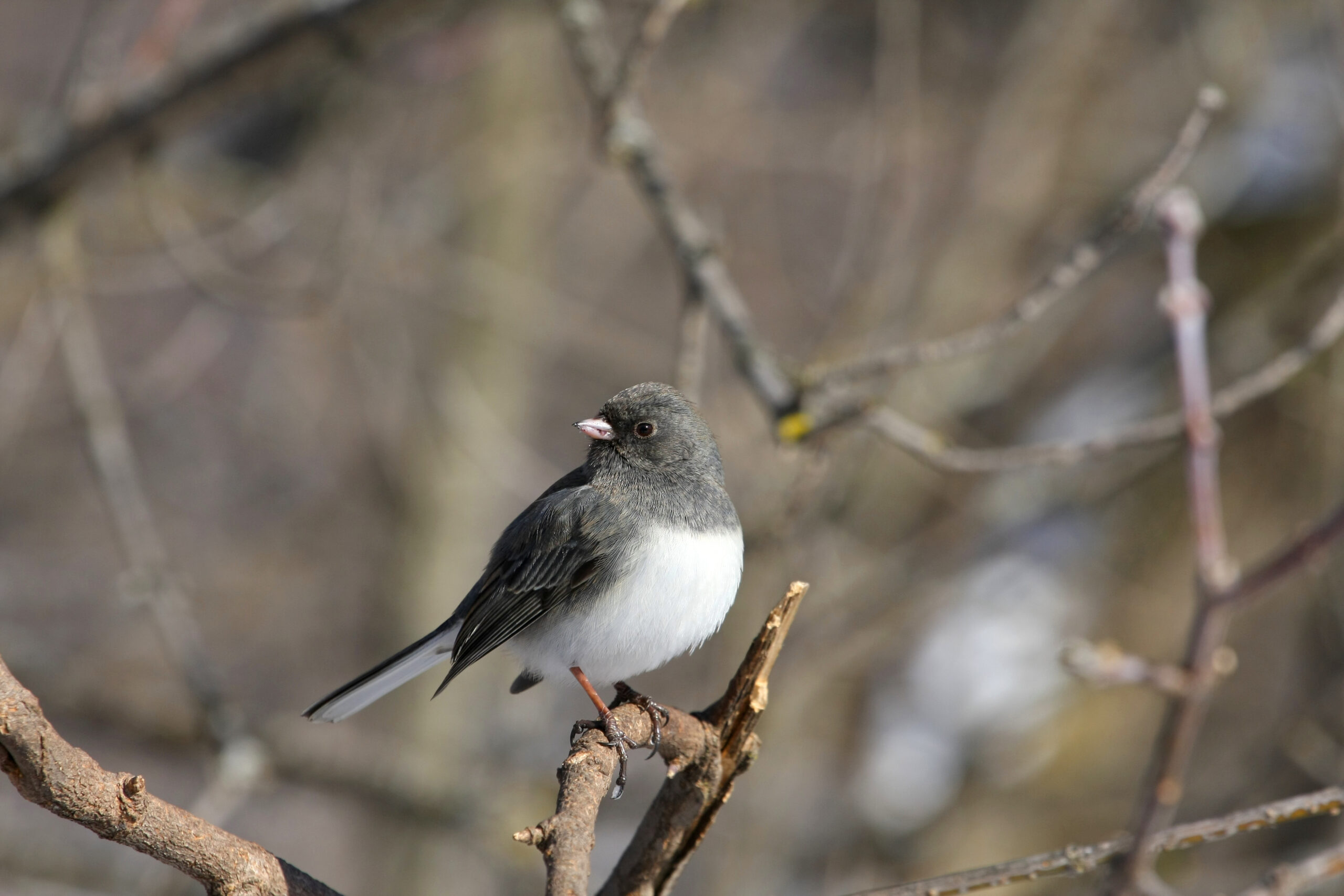 | Dark-eyed Junco |
 | Sandhill Crane |
 | Black-capped Chickadee |
 | Gray Vireo |
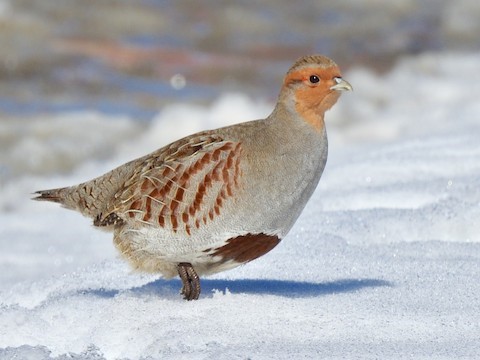 | Gray Partridge |
 | Tufted Titmouse |
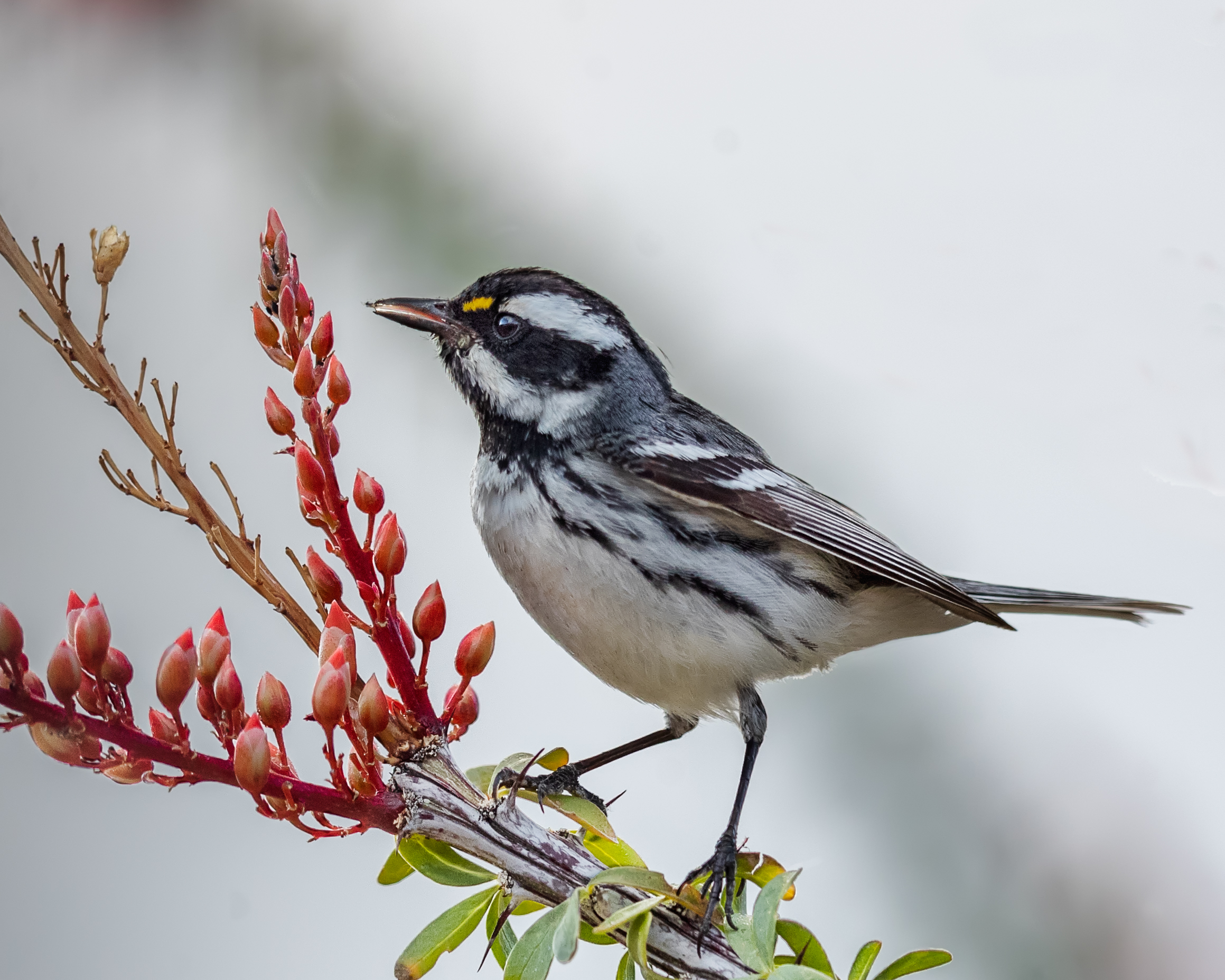 | Black-throated Gray Warbler |
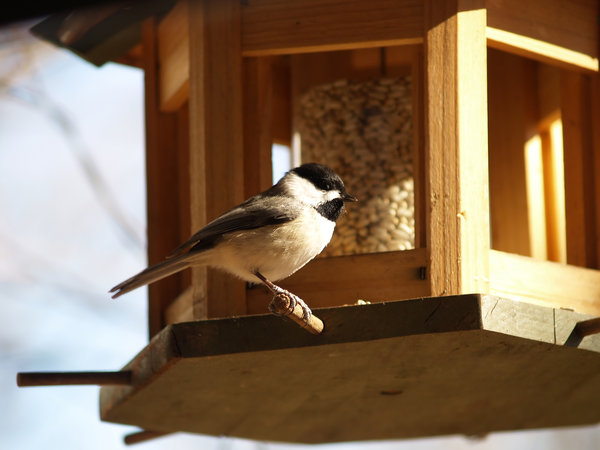 | Carolina Chickadee |
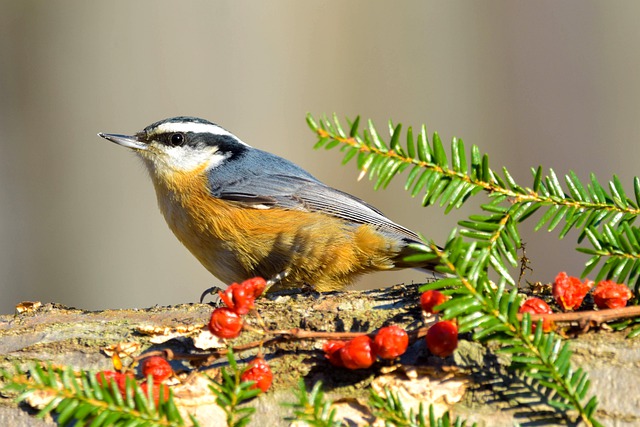 | Red-breasted Nuthatch |
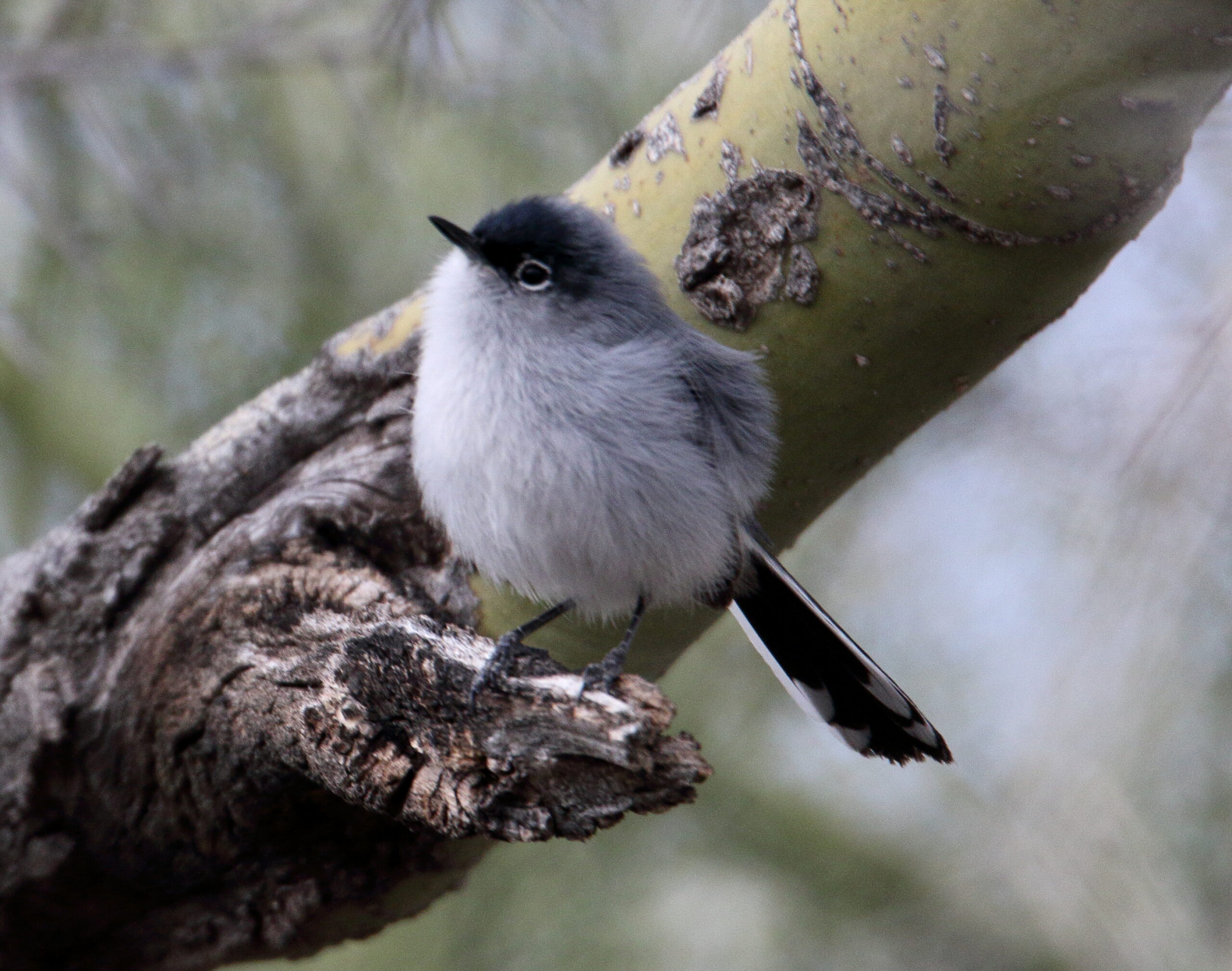 | Black-tailed Gnatcatcher |
 | Gray-cheeked Thrush |
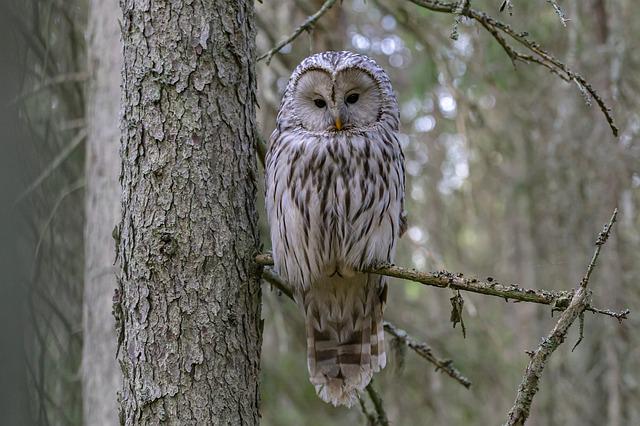 | Gray Hawk |
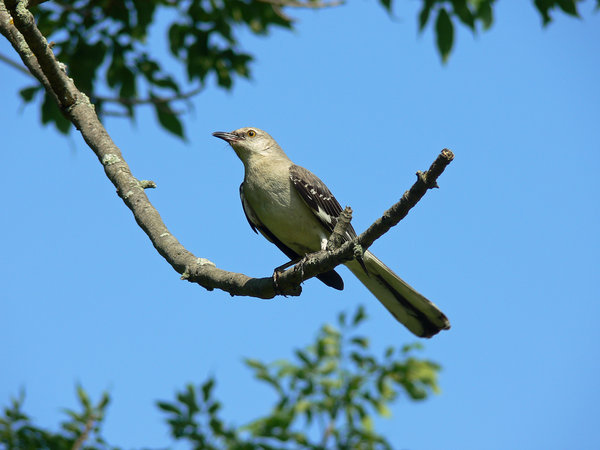 | Northern Mockingbird |
 | Clark’s Nutcracker |
 | White-breasted Nuthatch |
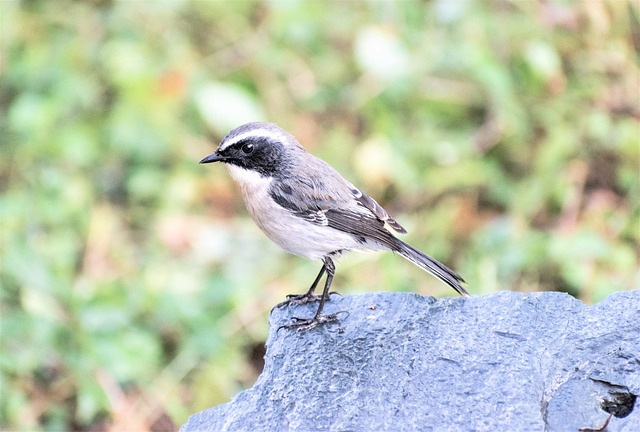 | Gray Flycatcher |
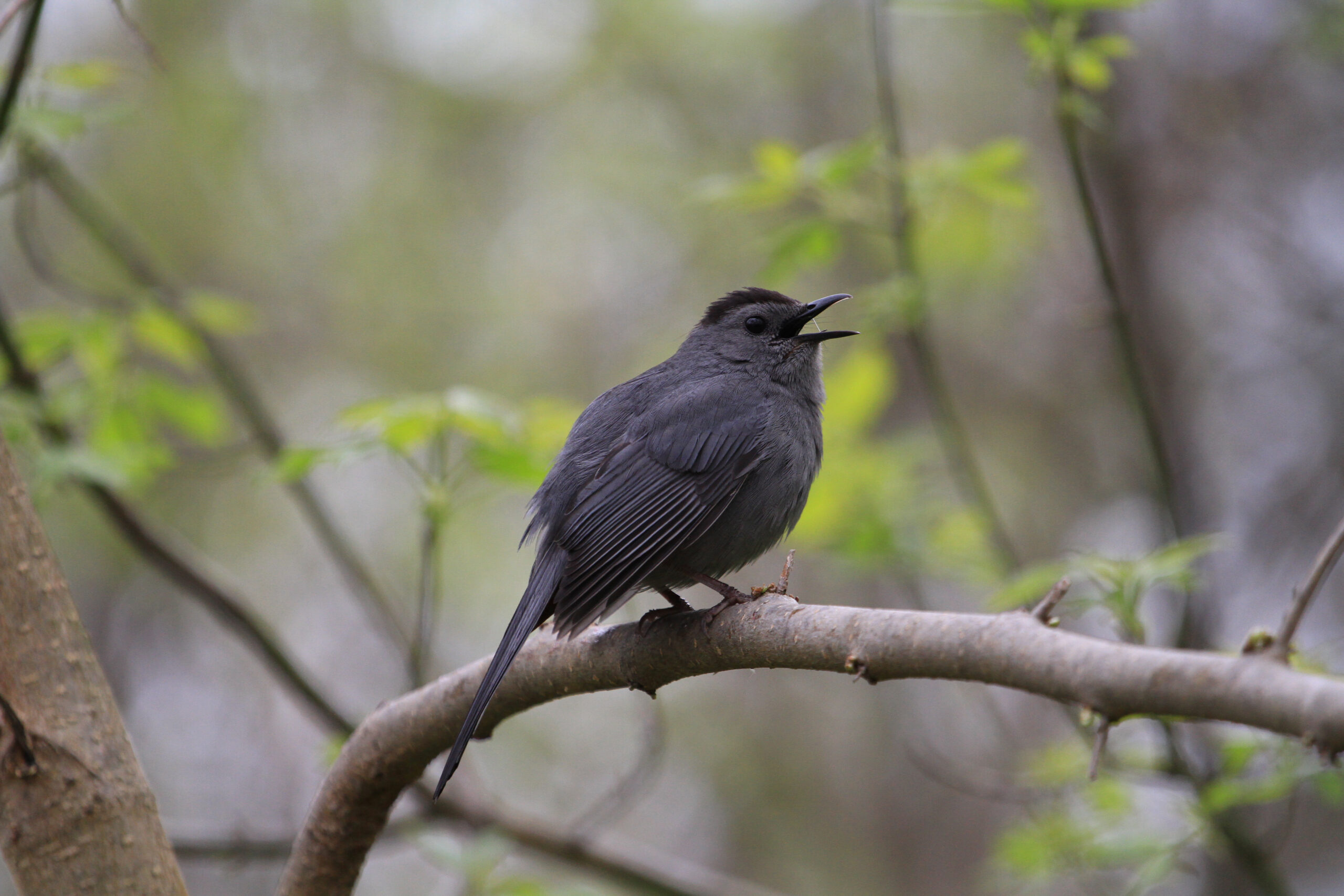 | Gray Catbird |
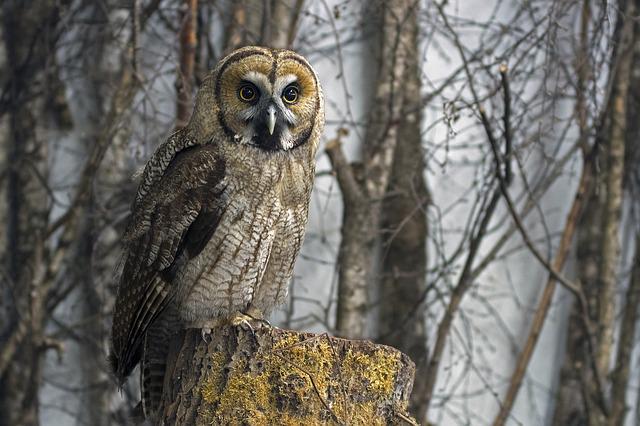 | Great Gray Owl |
Types of Small Gray Birds
Gray birds come from a variety of species from all corners of the globe. Read on to learn where to search for them and how to recognize them when you see them.
1. Canada Jay

They are hardy songbirds that may grow fairly big and have short beaks that are surprisingly tough.
They possess broad wings that are rounded at the tips and lengthy tails that are oval in shape.
The upper parts of a Canada Jay’s body are dark gray, while the underparts are lighter gray, and black forms a partial cap on the rear of the head.
In general, juveniles have a coloration that is between black and gray, and they typically have a lighter aperture at the bottom of the bill.
Most of the time, Canadian jays congregate in small clusters.
They glide in the air without making a sound, and their wings are often held horizontally below them.
In spite of the fact that they are capable of a wider variety of vocalizations than other jays, such as rambling and shouting, they are often quieter.
They consume an extremely diverse array of foods, from carrion to berries, in their meals.
2. Dark-eyed Junco

Juncos are a kind of sparrow that may have a variety of colorations depending on where they live.
In the east, they have a color similar to slate, but in the west, they might be black, white, or brown.
Some of them spend the whole year at their homes in the west, the Appalachian Mountains, or the northeast.
During the winter, those that spend their breeding seasons across Alaska and Canada fly south to warmer parts of the US.
They are widespread over the continent and may be discovered in a variety of habitats, including wide and partly forested regions, and commonly on the ground.
You may increase the number of Dark-eyed Juncos that visit your garden feeders by offering a varied range of seeds, like peanuts, cracked corn, sunflower seeds, nyjer, and millet.
The most effective feeders are those mounted on platforms or dispersed throughout the ground.
3. Sandhill Crane

The Sandhill Crane is a very huge and tall bird that has a very long neck, extremely broad wings, and very long, dark legs.
The large body narrows down to a slender neck, and feathers that have fallen off cover the relatively short tail.
The head is not very thick, and the bill is erect and somewhat bigger than the head.
They are birds of a slate gray color, with a reddish wash occasionally appearing on their heads.
Adults may be identified by their white cheeks and reddish skin on the head.
Juveniles do not have crimson crowns or rosy faces and instead have a rusty brown and gray coloration.
Breeding grounds for sandhill cranes include wetlands, open grasslands, and prairie areas.
They will also roost in the shallow water of lakes or ponds outside of the mating season, where they will be safe from any predators that may be there.
4. Black-capped Chickadee
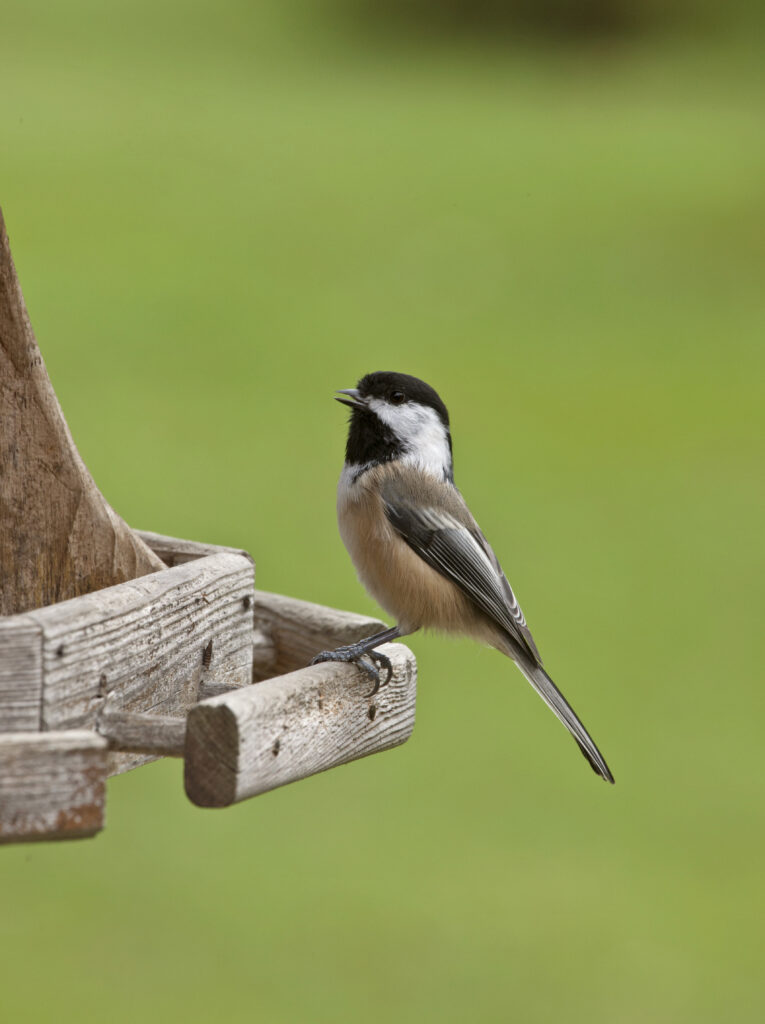
The Black-capped Chickadee is a lovely little bird that has a huge spherical head but a small body overall.
These birds will gladly dine at whatever feeders you have in your garden and inspect anything, even you!
They are distinguished by their black beaks and heads, white faces, and gray tails, backs, and wings.
All year long, you may find Black-capped Chickadees throughout the Midwest, Northwest, and Canada, as well as in the Northern States.
You could come upon them in open woodlands, forests, or parkland.
The diet of a Black-capped Chickadee consists of spiders, berries, suet, insects, and seeds.
You may entice numerous Black-capped Chickadees to visit your garden by providing them with sunflower seeds, suet, peanut butter, or peanuts.
They will even eat from your palm and are frequently among the first birds to find new feeders in a yard or garden.
They will also utilize nesting boxes, particularly ones that have been prepared for them, by having wood shavings placed inside.
5. Gray Vireo

A finely formed songbird is smaller than a warbler and has a shorter beak that is hooked at the tip and is considerably shorter overall.
The tips of the wings extend over the bottom of the tail in a minor manner.
It is a bird that is gray on top and white on the underside, and it has a single light wing bar that is more noticeable when the feathers are new.
Nest among mesquite scrub, oak scrub, chaparral, and stone pine-juniper in desert environments.
Migratory birds and birds that spend the winter in a particular location may be found in stream beds and other comparable habitats across deserts.
It then swings through the dense undergrowth and flies through the air in order to deftly pluck insects off the twigs and leaves of the trees.
During the beginning of spring, males will often sing from exposed perches.
6. Gray Partridge

Gray Partridge is a fat chicken that has a short tail, a round neck, a big, duck-like beak, and a small head that is relatively short.
It possesses rounded wings that are small in length.
It is gray on top, has rusty streaks running down the sides, and has a tan forehead with an orange brow.
The underside of the red tail and the horseshoe-shaped brown spot on the breast is gray in color.
It forages for food on the ground in pairs of juveniles and adults.
Whenever it gets startled, it immediately takes to the air and flies slowly while hovering just over the ground.
The majority of its occurrences across North America may be seen in agricultural areas and meadows with hedges.
7. Tufted Titmouse
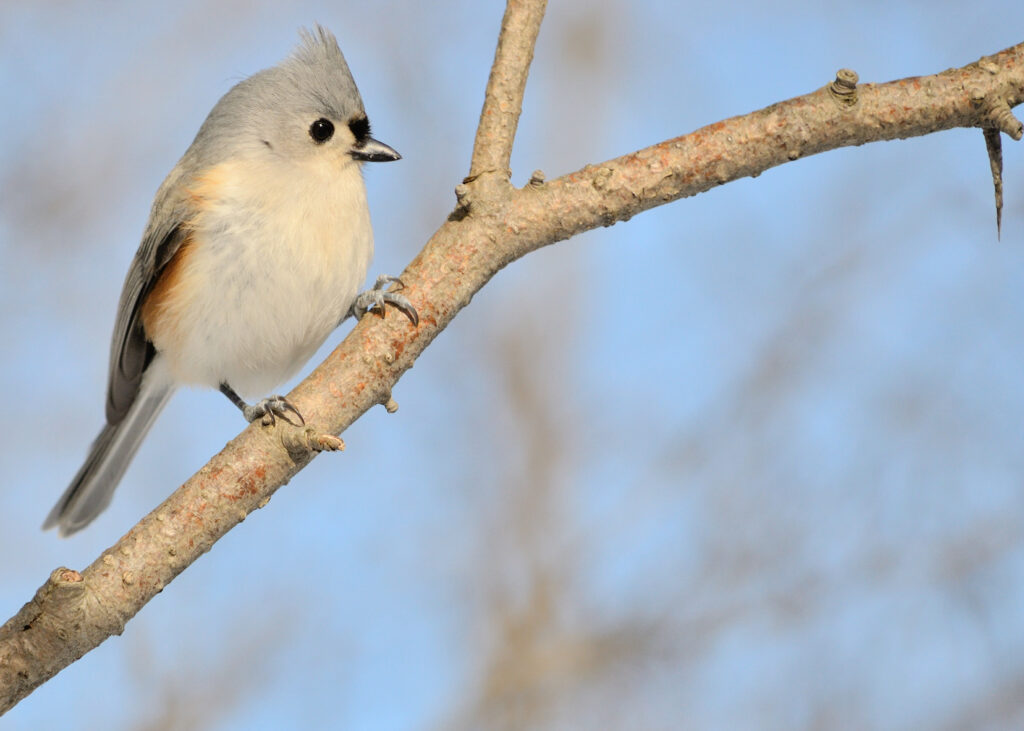
The Tufted Titmouse is a little bird having a charming gray crest and wide eyes that frequently congregate with nuthatches, woodpeckers, and chickadees.
It is gray on the white and back underside.
Tufted Titmice spent the whole year in states located in the Southeast and East.
The Tufted Titmouse is a bird that lives in parks, wooded areas, and even at bird feeders in people’s backyards.
It has the ability to be dominant over other, smaller birds.
During the warm summer months, the majority of their diet consists of insects, such as beetles, caterpillars, wasps, and ants.
They also consume snails and spiders. In addition, they will consume berries, fruits, and nuts, and they will store away shelled seeds.
Peanuts, suet, and sunflower seeds placed in suet cages or tube feeders may all be used to entice tufted titmice to the feeders in your garden.
They will also consume food from platform feeders if provided. You might also try setting up a nesting box in the hopes of luring in a breeding couple.
The Woodlink caged feeder is the greatest choice for attracting little birds while preventing larger birds, such as grackles, from devouring all of the seed.
This is because the cage is placed far enough away from the feeder to stop larger birds from just sticking their heads through the openings.
8. Black-throated Gray Warbler
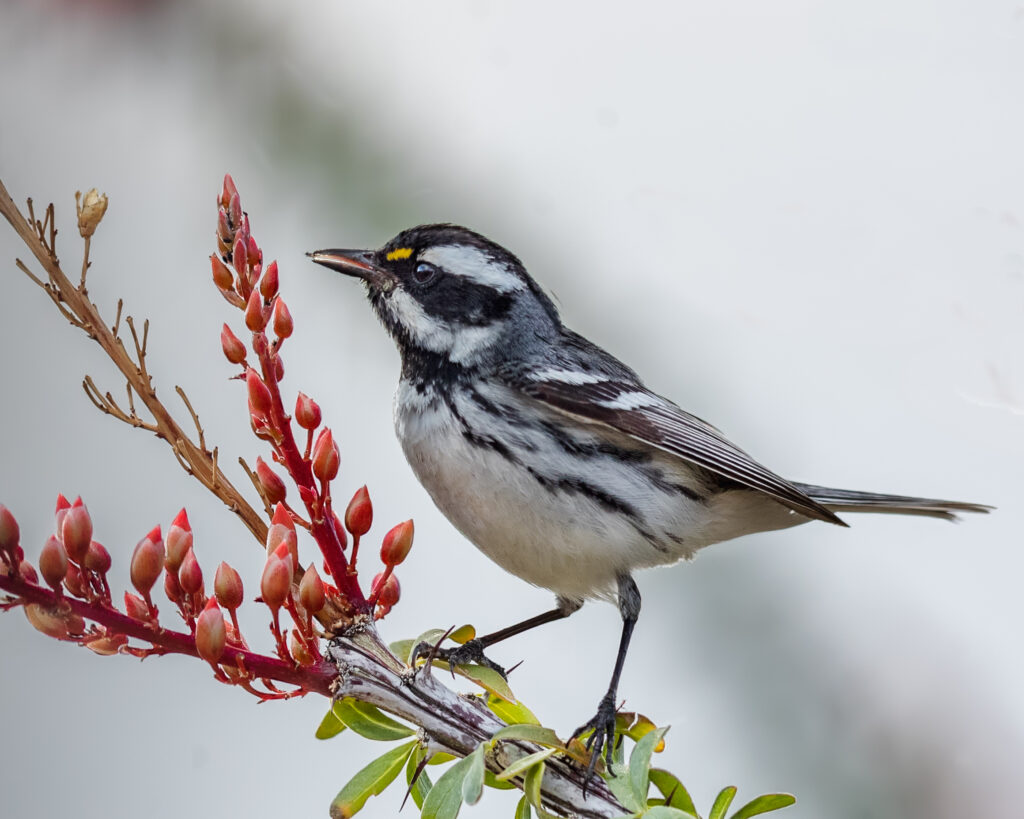
A little warbler with a big head and a beak that is round and tiny.
The primary colors are white, black, and gray, and there is a yellow stripe that runs over and ahead of the eye.
Featuring vertical stripes of white and black, as well as crisp black lines around the side.
The females are significantly paler than the males and often have ragged black necks. When seen from below, both the belly and the tail seem completely white.
It hops through the trees with deliberate motions and travels more slowly than most other species of warbler.
Typically common in spruce, open pine-oak, pine-oak woods, and pine-juniper.
9. Carolina Chickadee

This little bird possesses a peculiar spherical body form, characterized by a big head and a short neck.
It also has a very long tail that is quite thin. It has a beak comparable in length to a warbler’s but is noticeably narrower than a finch’s.
It features a cap and a bib that are both black, and its face is white.
The wings, head, and tail are all a light gray color.
Acrobatic and curious in nature. Except for when it’s mating season, you can usually find it in feeding flocks with certain other Carolina chickadees as well as other tiny species that wander throughout a large region.
Even though it lives in groups when it eats, it generally spreads out across a large area.
10. Red-breasted Nuthatch

The bird is both small and light in weight and possesses a pointed beak that gives it a fierce appearance.
Red-chested nuthatches are characterized by their plump bodies, extremely short tails, and nearly nonexistent necks.
Additionally, their short wings are rather broad.
These birds have a bluish-gray coloring with heavy patterning on their heads.
They have a black cap having a bar above the eye that is split from the line across the eye by a white band.
The underparts have a lot of oxidized cinnamon on them, and the females seem paler than the males.
Through their quest for food, red-breasted nuthatches move fast in holes and cracks, as well as under bark flakes, on trees and logs.
11. Black-tailed Gnatcatcher

It is characterized by a slender and small body, a straight and narrow beak, and a long tail.
In general, they have a dark appearance, and each has one eye that is ringed by white, as well as a black tail at the base of their body that has white accents.
Above that, their upper parts are a deeper gray, while their underparts are a lighter gray.
Breeding males possess a distinctive black crown on their heads.
In deserts, they like regions with dense brush cover.
They search between the thorns and the leaves for any little insects and then assess the situation out in the open.
They live in the desert scrub, in addition to regions that are covered with prickly pear, ocotillo, mesquite, and cholla, as well as washes densely covered with salt and creosote plants.
12. Gray-cheeked Thrush
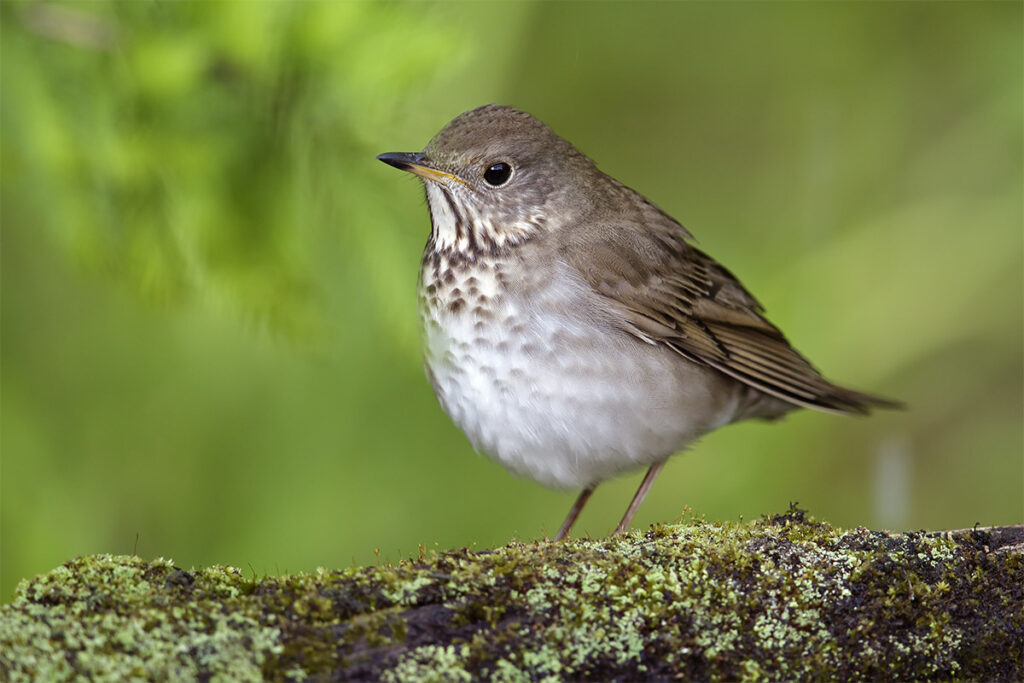
Their exquisite song may be heard echoing across the nesting sites in the northern firs, and it can also be heard in the brush and scrub during migration.
They have a face that is entirely gray, with a short bill that has a golden base to it.
It is the American spotted thrush that breeds the furthest north of any of the other subspecies.
This timid scrub-lurker is a result, and as a result, it is not widely recognized and appears very seldom.
13. Gray Hawk

Like other buteos, this species has short, broad wings and a long tail.
Males are much more diminutive than females of the same species.
Adult gray hawks are light gray birds that have narrow barred breast striking bars, white and black tails, and talons.
The under tail coverts are white, while the apex of the wings is black in color.
The dots and lines on the underside are also dark brown, and the rear of the animal is also dark brown.
On their fur, there is a distinct imprint of a white face and an ear that is split in two by a black line near the eye.
14. Northern Mockingbird

A songbird of middling size, but slightly smaller than a thrush and have a longer tail than that species.
They possess long legs, short heads, and a long, narrow beak that curves slightly downward at the tip.
Because its wings are rounded, short, and broad, the tail seems unusually lengthy while the animal is in flight.
In general, mockingbirds have a brownish-gray coloration, with lighter coloring on the abdomen and breast, and they have two white wing bands on each of their wings.
When the bird is perched, there may be a white spot visible on each wing; however, when the bird is in flight, these white patches develop into enormous white flashes.
When in flight, the white outer tail feathers typically draw attention to themselves.
15. Clark’s Nutcracker

They are around the size of jays, but their bodies are formed like corvids; they have short tails and rounded crestless heads.
It possesses a long bill that is erect and pointed at the end.
The birds have light gray bodies with black wings that, while in flight, display white patches along the back borders of the wings.
There is a huge white patch on both sides of the black center section of the tail. The wings, legs, and beaks are all colored black.
Clark’s nutcrackers are also known as the “Birds of the Mountain”.
They have a tight relationship with giant seed pines like the whitebark pine and the agile pine; however, they may also be discovered in a montane deciduous forest in the western United States at elevations ranging from four to eleven thousand feet.
16. White-breasted Nuthatch

Nuthatches with white breasts are lively tiny birds that have a grayish-blue back, white mostly on the abdomen and face, and a black crown.
It is common to see a chestnut tint on the lower abdomen and beneath the tail of these animals.
White-breasted Nuthatches are resident throughout the year in the majority of states in Southern Canada and the United States.
In addition to bird feeders, they are common among woodland borders, deciduous woods, gardens, and parks with trees.
The majority of their diet consists of different kinds of insects, such as beetles and their larvae, spiders, ants, and even caterpillars.
Acorns, sunflower seeds, hawthorn berries, and even maize crops may be found in the diet of white-breasted nuthatches.
They also consume seeds and nuts.
They push acorns and huge nuts into the bark of trees and then use their bills to crack them apart or “hatch” them so the seeds may fall out.
Putting peanuts and sunflower seeds in tube or suet feeders can encourage numerous White-breasted Nuthatches to visit your garden.
17. Gray Flycatcher

It is a little flycatcher having a long and narrow beak, making it a rather slim bird overall.
It has little wings that don’t go very over the tertiary feathers that are attached to the main feathers. This also gives the impression that the line is rather lengthy.
Having a grayish upper half and a whiter lower half, and a very light brow. A darker tail and wings, having two wing bands that are a grey color.
The majority of the bill is a yellowish or pinkish color, and it typically has a blackish tip.
Nests on slopes and mountainsides have junipers, open firs, cedars, spruces, scrubby oaks, and mature sagebrush.
It travels across a wide variety of environments, but poplars and willows along stream corridors are the most likely to see it when it passes through those areas, in environments quite similar to those, as well as in dry thorn scrub and woodland areas during the winter.
18. Gray Catbird
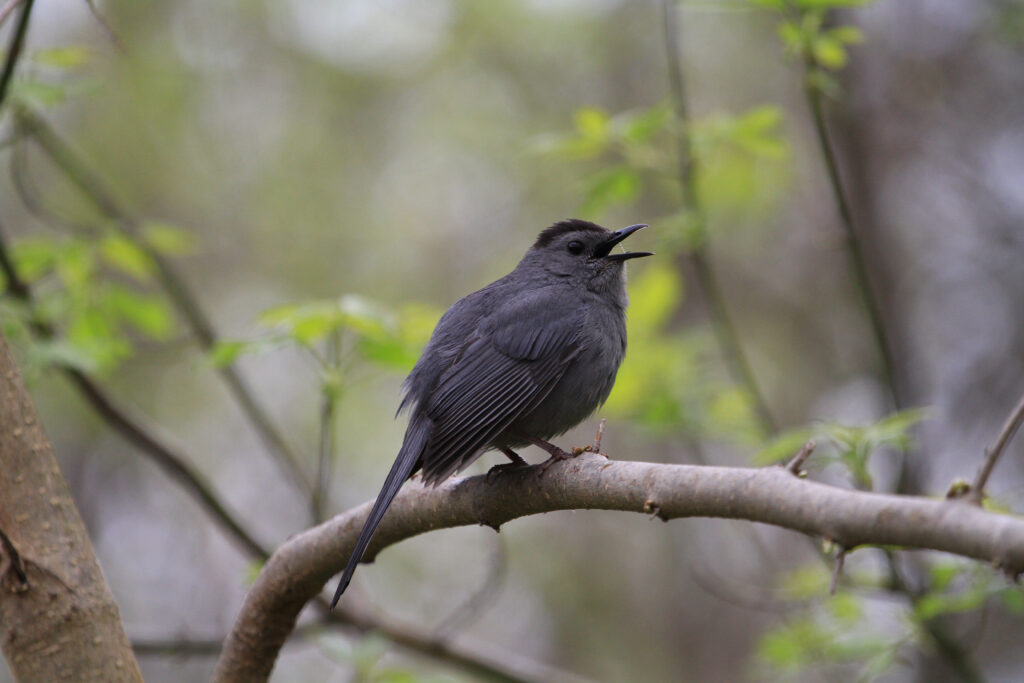
The Gray Catbird got its name from the peculiar catty mew sound it sings, which may linger for a maximum of ten minutes at a time.
They are grayish in appearance, have black tails and caps, and have a rusty spot beneath their tails.
The Caribbean and the Gulf Coast are where Gray Catbirds spend the winter after breeding in the Midwest, the East Coast of the United States, and southern Canada.
A few of them stay near the East Coast for the whole year.
Gray Catbirds may be found in thickets of bushes and small trees, as well as at the borders of forests and in hedgerows.
You may increase the number of Gray Catbirds that visit your garden feeders by planting shrubs and trees in your garden that bear fruit, including serviceberry, dogwood, and winterberry.
19. Great Gray Owl

They are among the largest species of owls, and they possess long tails and enormous wings.
They are owls that have broad discs on their faces and big heads generally.
Although it is rather light for its size, the majority of its mass is composed of feathers.
The males are much more diminutive than the females.
In general, gray owls have a silvery gray coloring, and their feathers are barred with fine, wispy gray, brown, and white bands. An ‘X’ is formed by two pale arches between the yellow eyes.
One of the white stripes goes all the way around the neck.
The gray owl is native to areas having thick pine forests and coniferous fir, as well as meadows and taigas in the surrounding area.
Conclusion
In conclusion, small gray birds are a fascinating group of avian species that are often overlooked due to their unassuming appearance.
However, their small size and subdued coloration belie a remarkable diversity in terms of their physical characteristics, behaviors, and habitats.
From the ubiquitous Dark-eyed Junco to the elusive and rare Gray Hawk, the 19 types of small gray birds covered in this article offer a glimpse into the rich tapestry of bird life that exists all around us.
Whether you are a seasoned birder or just starting to explore the world of avian fauna, these small gray birds are sure to capture your attention and inspire you to learn more about the fascinating world of birds.
FAQ
Are there any small gray birds that are particularly difficult to spot in the wild?
Yes, the gray jay and the pygmy nuthatch are both small gray birds that can be elusive and difficult to spot in the wild.
Do small gray birds have any distinctive physical features?
While small gray birds may seem unremarkable at first glance, many have distinctive physical features that can help with identification. For example, some have colorful patches on their wings or tails, while others have distinctive crests or beaks.
What kinds of habitats do small gray birds prefer?
Small gray birds can be found in a wide variety of habitats, from woodlands and forests to grasslands and suburban areas. Some prefer dense brushy areas, while others are more commonly found in open areas.
Can small gray birds be kept as pets?
It is generally not legal or ethical to keep wild birds as pets. Additionally, many small gray birds have specific dietary and habitat requirements that can be difficult to replicate in captivity.
How can I attract small gray birds to my yard?
Providing food, water, and shelter can help attract small gray birds to your yard. Consider setting up bird feeders, bird baths, and bird houses to create a welcoming habitat.
What is the smallest small gray bird?
The smallest small gray bird is likely the bushtit, which measures around 3.5 inches in length and weighs less than 0.2 ounces.
Are small gray birds threatened or endangered?
While some small gray bird species are threatened or endangered due to habitat loss or other factors, many are considered to be of least concern. It is important to be aware of the conservation status of different species and to take steps to protect their habitats.
Last Updated on March 22, 2023 by Lily Aldrin

The picture of the grey hawk looks more like an owl?